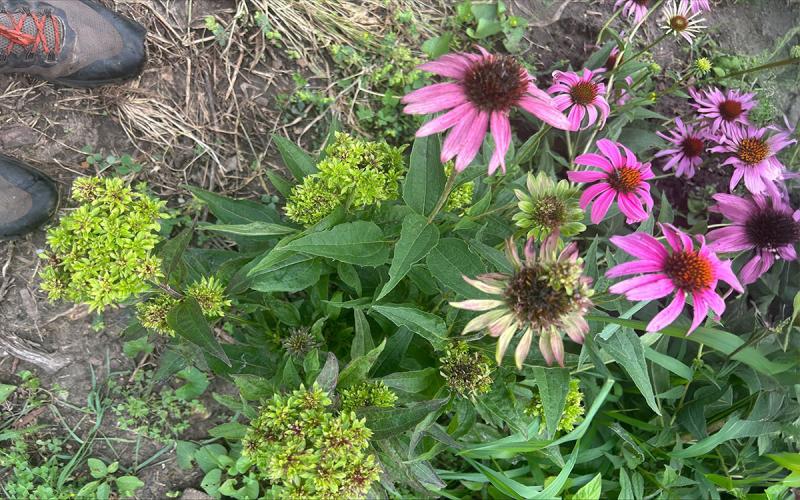Originally written with contributions by Emmanuel Byamukama, former SDSU Extension Plant Pathologist and Ruth Beck, former SDSU Extension Agronomy Field Specialist.
Tan spot and powdery mildew as well as barley yellow dwarf were found developing at low levels in winter wheat fields scouted the week of May 24, 2020. Tan spot was found in fields where wheat was planted into wheat stubble, whereas powdery mildew was found in fields where the wheat was heavily tillered. Barley yellow dwarf was found in several fields but only a few scattered plants had symptoms.
Tan Spot
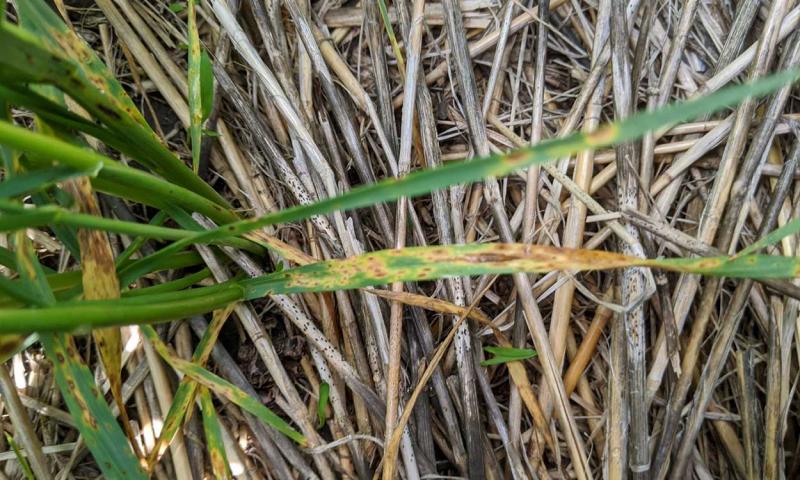
Tan spot starts as small necrotic lesions, tan to brown in color, usually on the lower leaves (Figure 1). Tan spot lesions can coalesce, leading to larger areas of the leaf dying. Tan spot eventually moves to the mid-canopy leaves and can also develop on the upper leaves if conditions are conducive. The tan spot pathogen survives on wheat stubble and can infect wheat under a wide range of temperatures but requires at least 6 hours of leaf wetness.
Powdery Mildew
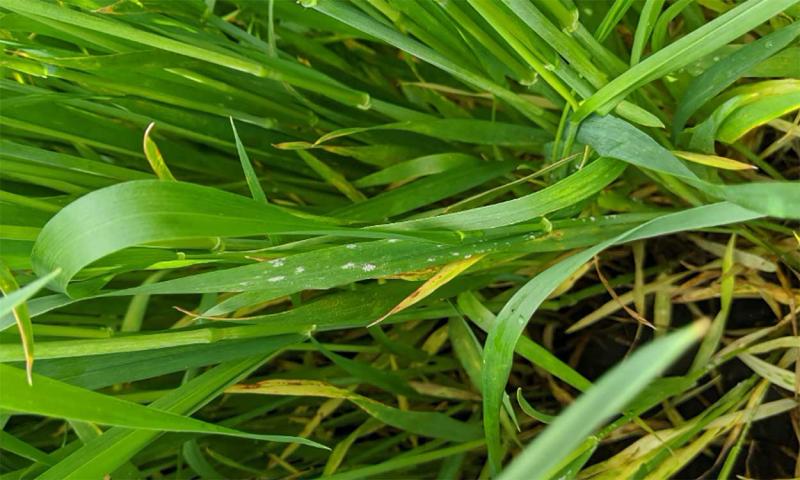
Powdery mildew starts as raised, white, powdery spots on the lower leaves especially on the sub-tillers (Figure 2). Fields that have high nitrogen levels in the soil tend to be more susceptible. Splitting nitrogen application in fall and spring reduces the level of powdery mildew development. This disease develops in temperatures between 60-70°F with frequent rains or a long leaf wetness duration. Powdery mildew development is slowed down when the temperature is higher than 77°F.
Barley Yellow Dwarf
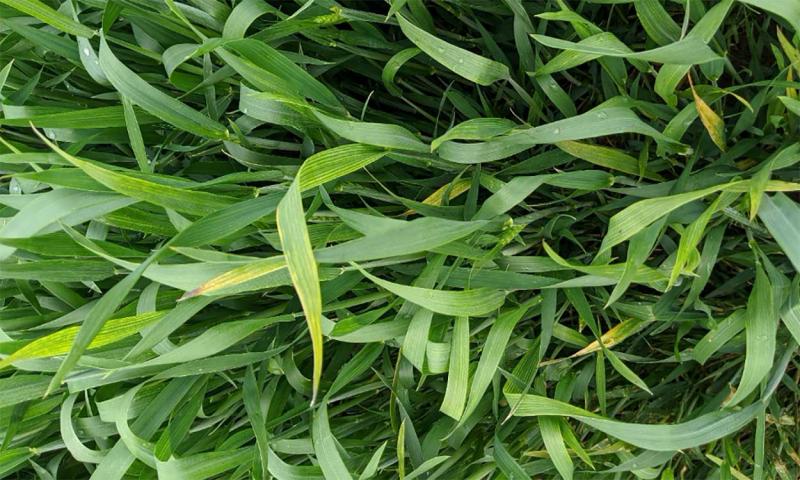
Barley yellow dwarf, caused by Barley Yellow Dwarf Virus (BYDV), progresses as yellow, purplish-red discoloration of leaves starting from the leaf tip of upper leaves (Figure 3). The lower leaves may remain symptomless. Barley yellow dwarf virus is vectored by different aphid species. Symptoms being observed now in winter wheat are likely the result of transmission from aphids present in the wheat last fall. BYDV can survive between crop cycles in volunteer wheat, barley, oats and several grass weed hosts. This disease usually develops on a few plants in the field and does not significantly impact yield.
Management: A fungicide for scab can also protect the upper leaves
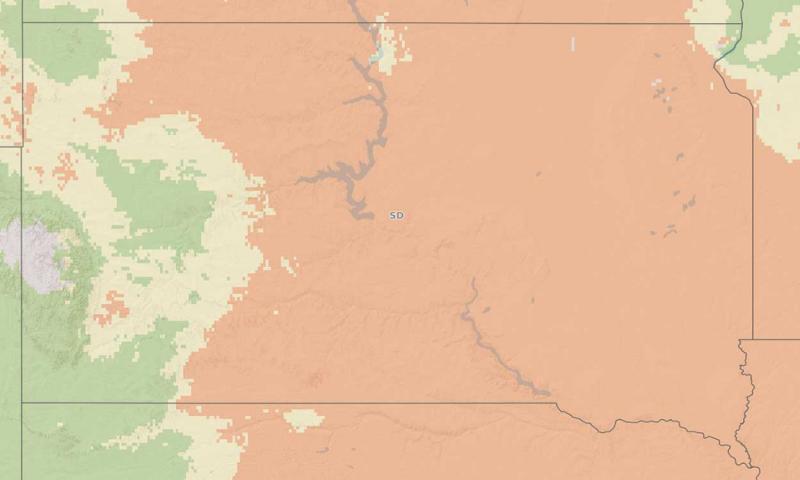
If fungal leaf spot diseases are developing on lower leaves in wheat fields which are at flag leaf/boot growth stage and the flag leaf and two leaves below the flag leaf are found to be clean, producers can skip the fungicide application at flag leaf. However, scouting should continue until flowering. The last timing window for fungicide application in wheat is at flowering. This application is typically made to prevent Fusarium head blight (FHB or scab). Since we have had good moisture and temperatures are warming up, the risk of scab is likely moderate to high for many areas of South Dakota (Figure 4). Use the FHB prediction tool to decide if a fungicide application at flowering (50% of the plants have mid-head flowers present), is needed. The SDSU small grains disease prediction tool can help monitor the risk for both fungal leaf diseases and FHB. A fungicide application against FHB also provides protection of the upper leaves from fungal diseases.

